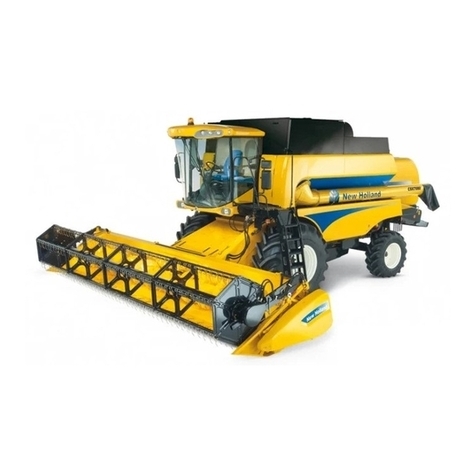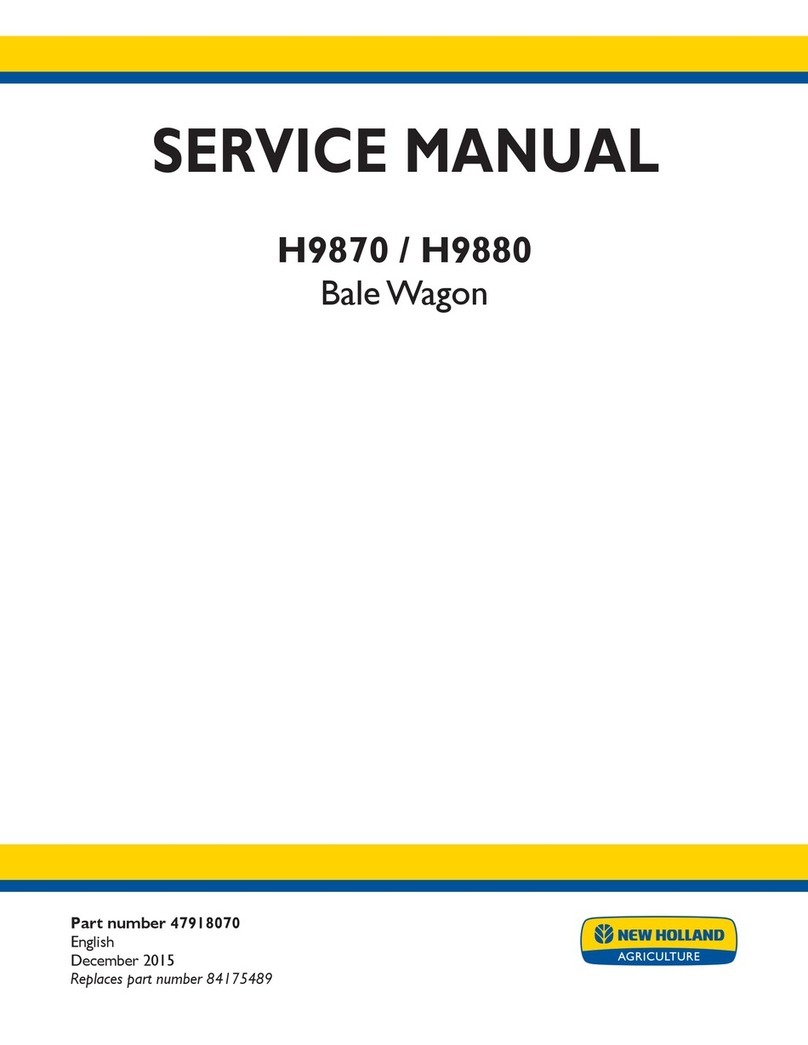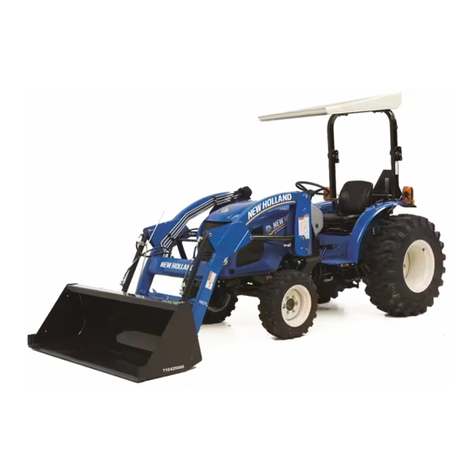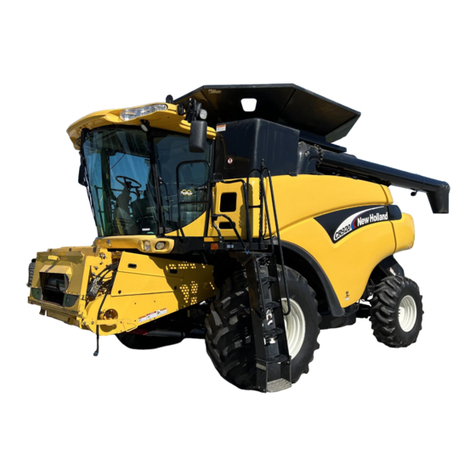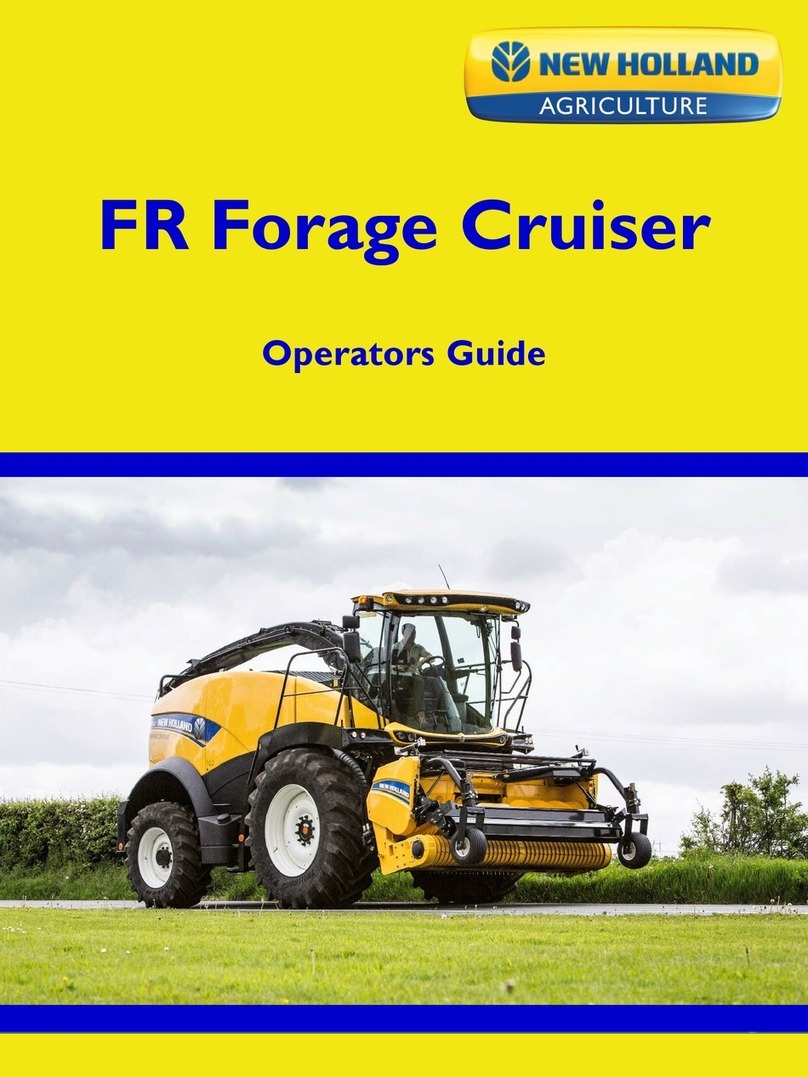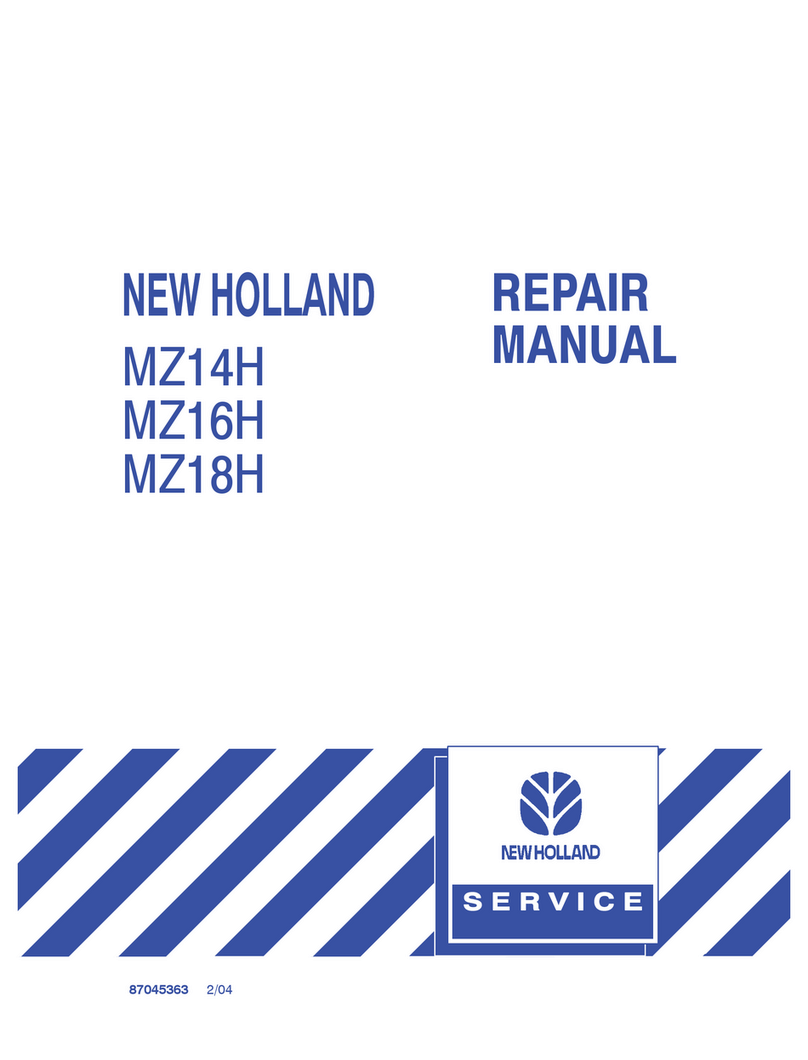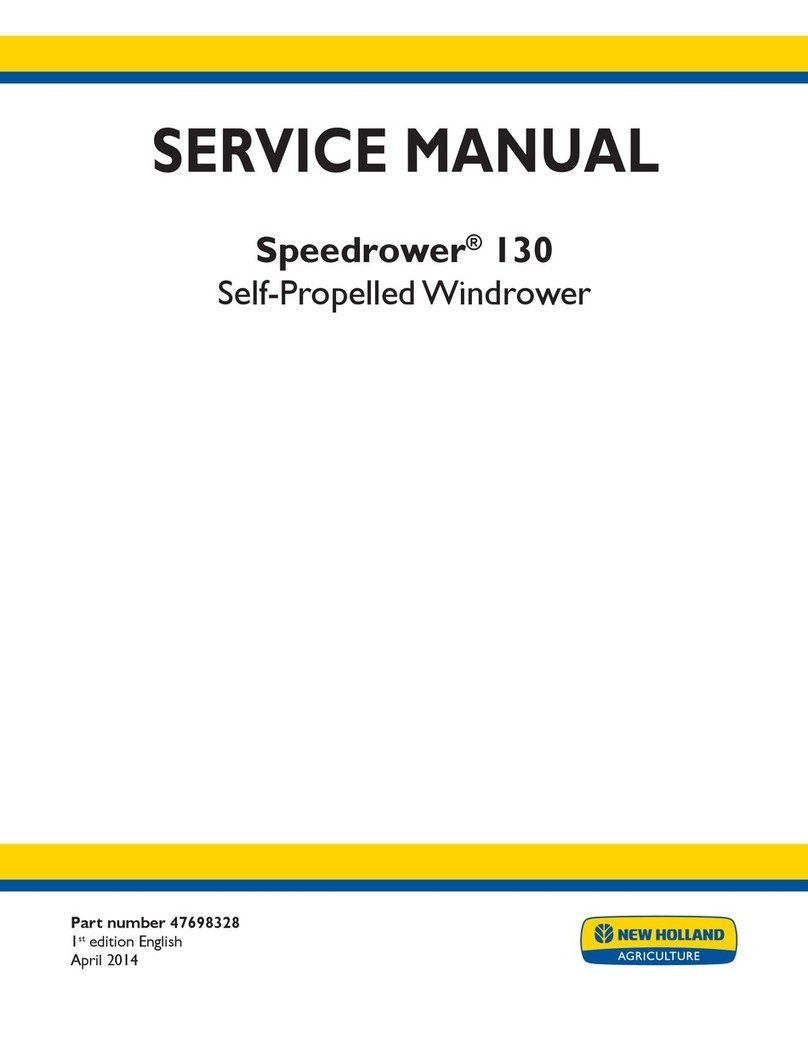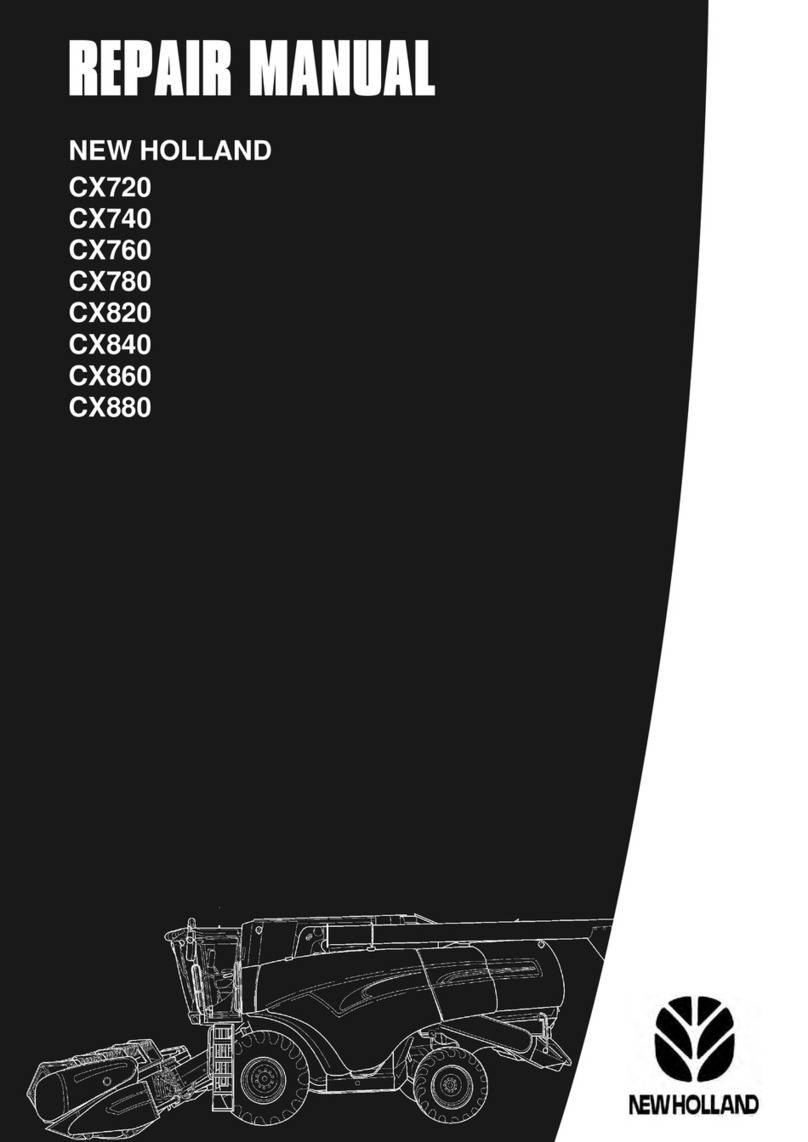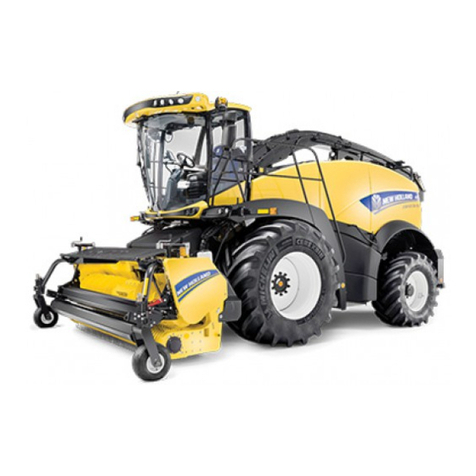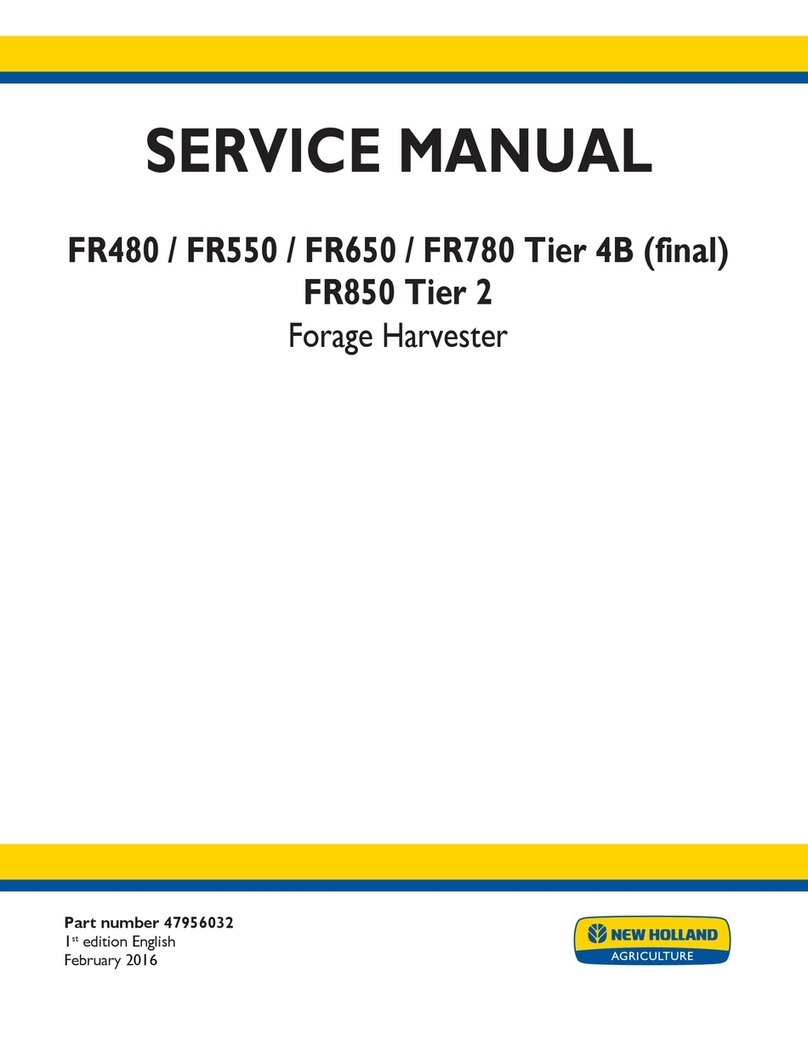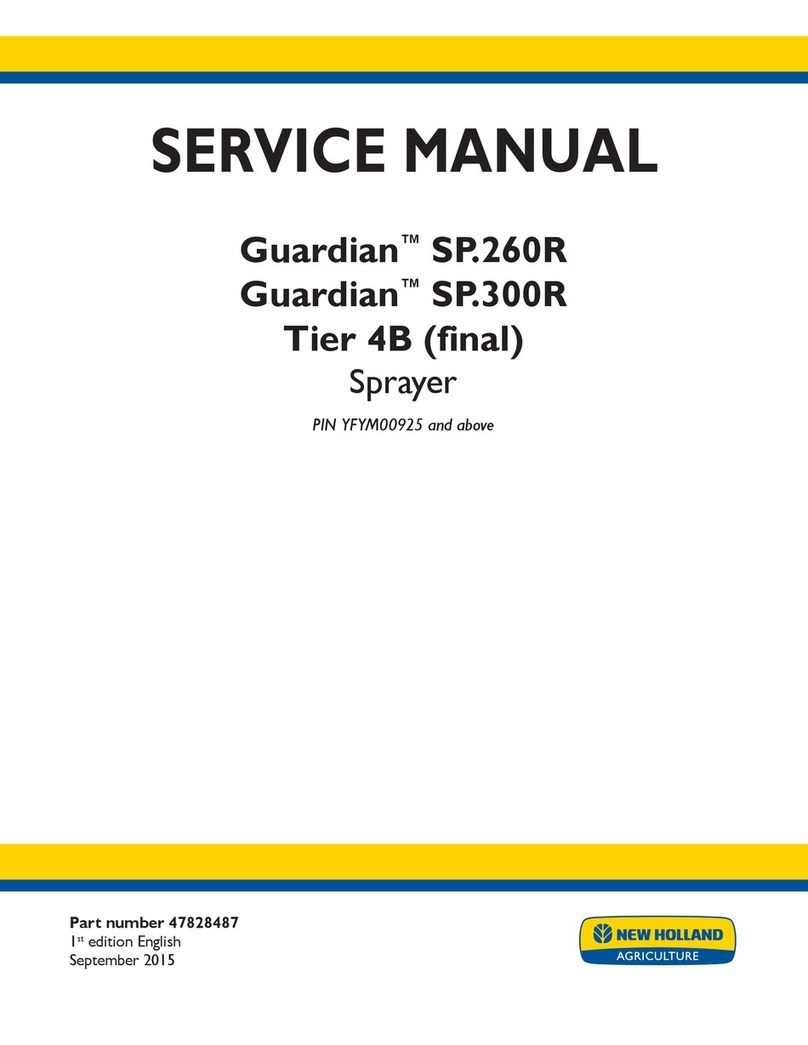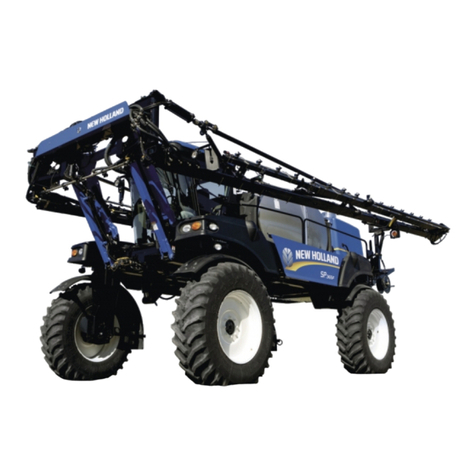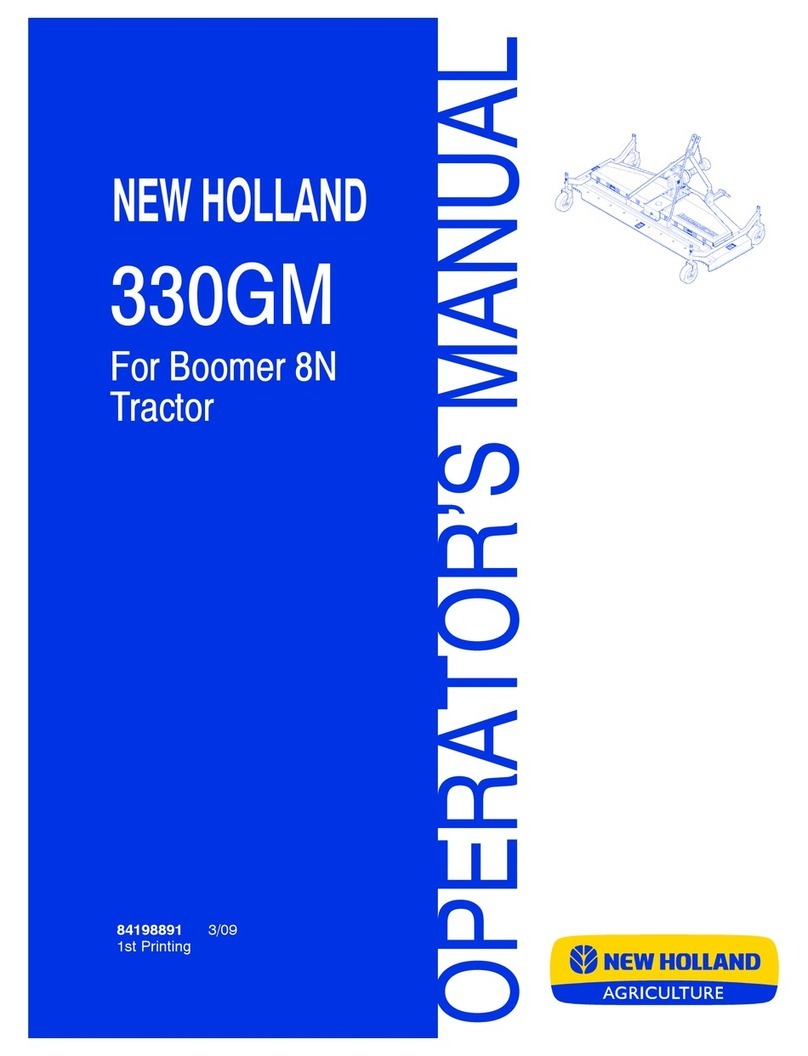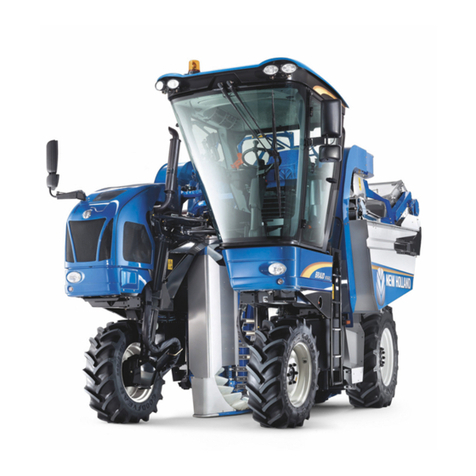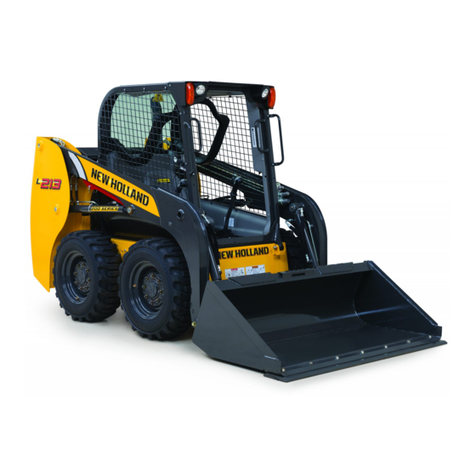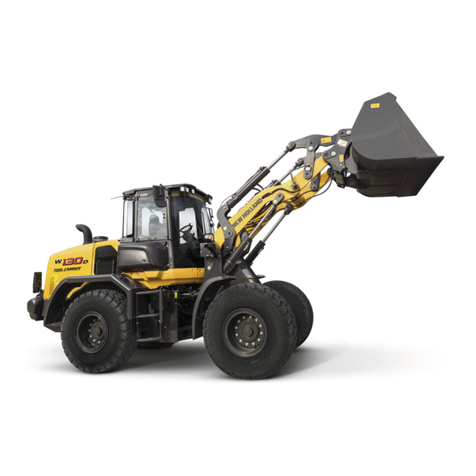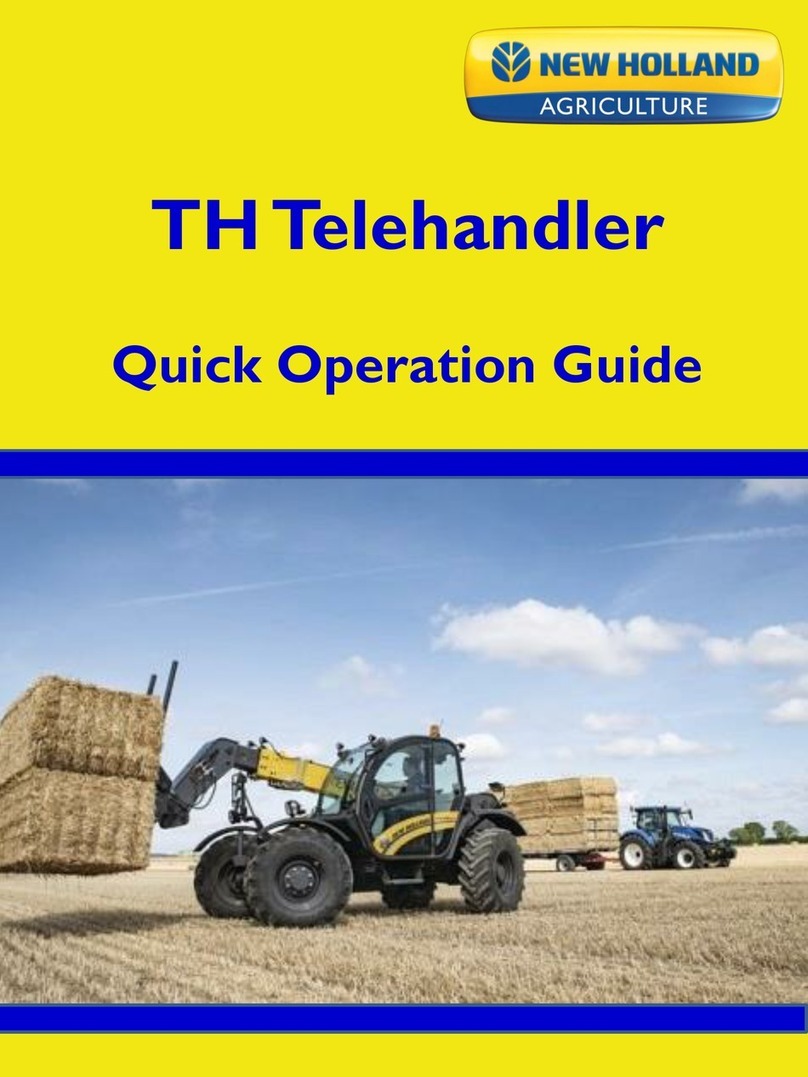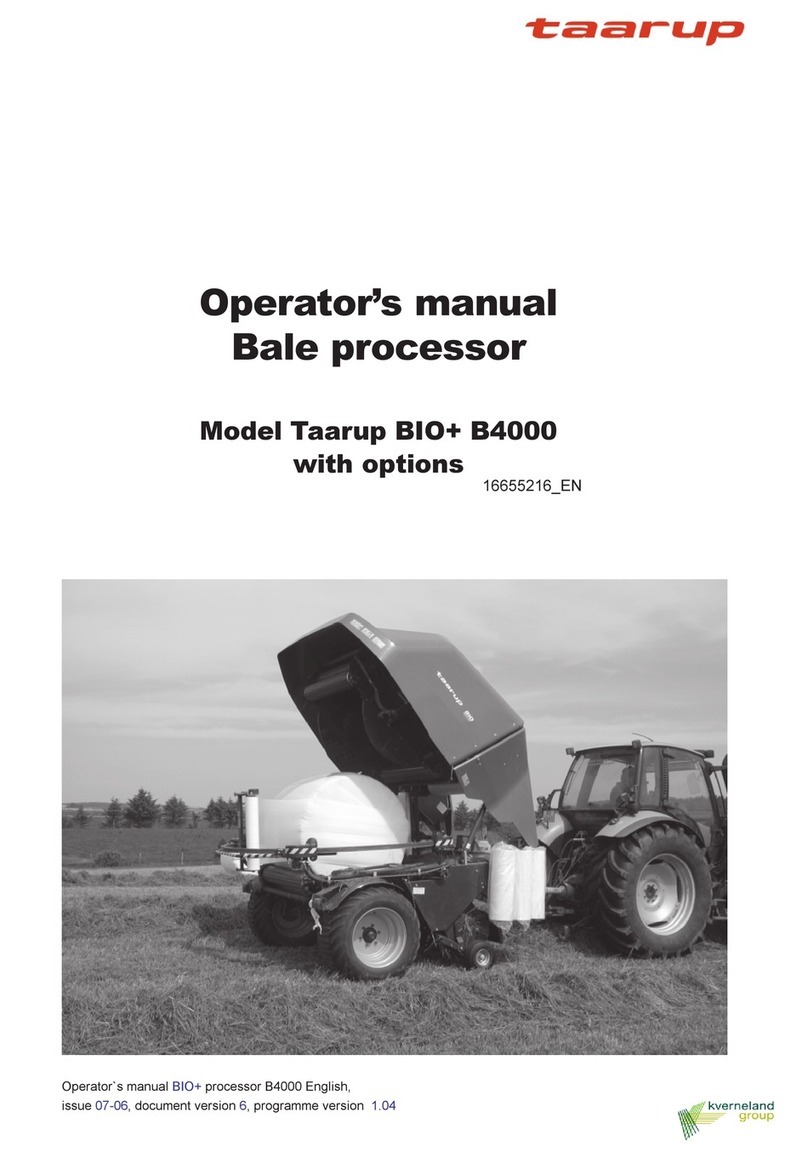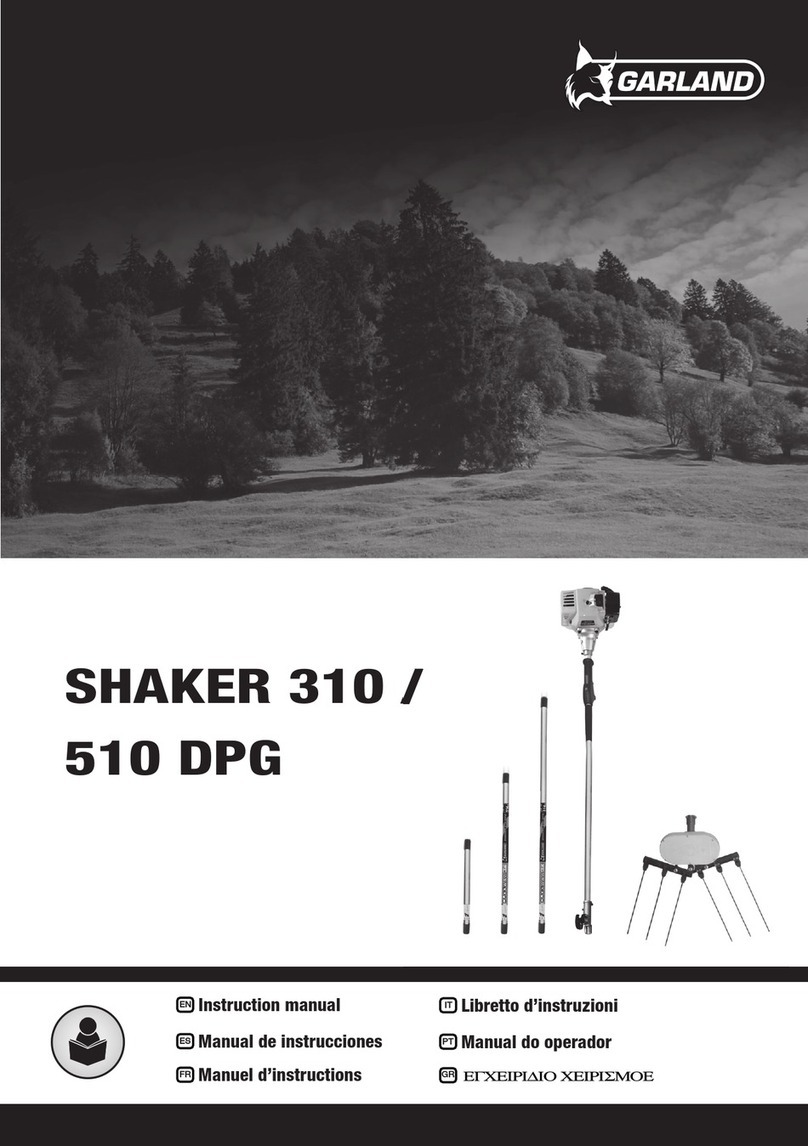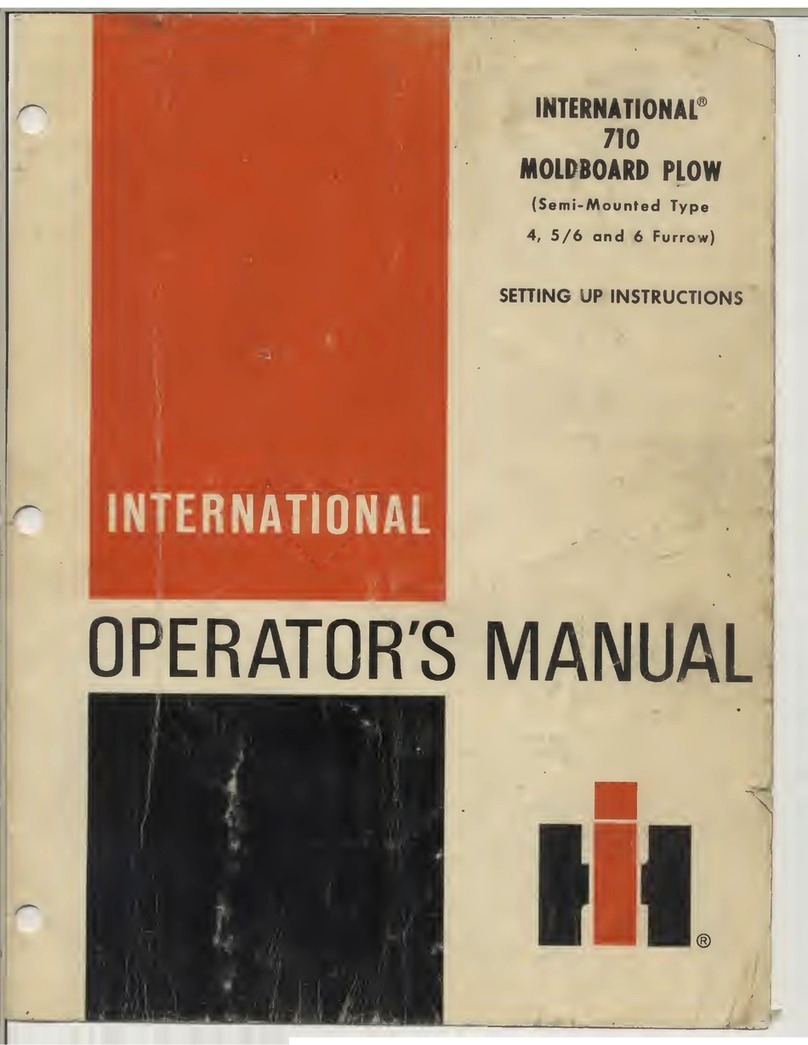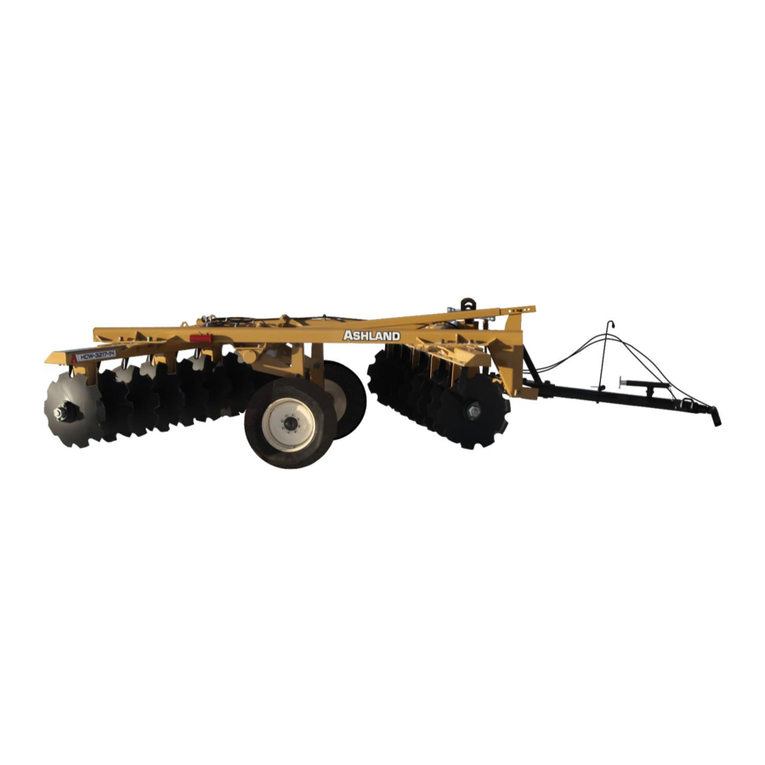
0-8
10. Some components of your tractor, such as
gaskets and friction surfaces (brake linings,
clutch linings, etc.) may contain asbestos.
Breathing asbestos dust is dangerous to
your health. You are advised to have any
maintenance or repair on such components
carried out by an authorized New Holland
Dealer. However, if service operations are to
be undertaken on parts that contain asbes-
tos, the essential precautions listed below
must be observed:
•Work out of doors or in a well ventilated
area.
•Dust found on the tractor or produced
during work on the tractor should be
removed by extraction, not by blowing.
•Dust waste should be dampened, placed
in a sealed container, and marked to
ensure safe disposal.
•If any cutting, drilling, etc. is attempted on
materials containing asbestos, the item
should be dampened and only hand tools
or low speed power tools used.
OPERATING THE TRACTOR
1. Before starting the tractor, apply the parking
brake, place the PTO lever in the “OFF”
position, the lift control lever in the down
position, the remote control valve levers in
the neutral position, and the transmission in
neutral.
2. Always sit in the tractor seat when starting
the engine or operating controls. Do not start
the engine or operate controls while standing
beside the tractor.
3. Do not bypass the neutral start switches.
Consult your New Holland Dealer if your
neutral start controls malfunction. Use jumper
cables only in the recommended manner.
Improper use can result in tractor runaway.
4. Avoid accidental contact with the gear shift
lever while the engine is running, as this can
cause unexpected tractor movement.
5. Before getting off the tractor, disengage the
PTO, turn the engine off, and apply the
parking brake. Never get off the tractor while
it is in motion.
6. Do not park the tractor on a steep incline.
7. Do not operate the tractor engine in an
enclosed building without adequate ventila-
tion. Exhaust fumes can cause death or illness.
8. If the power steering or engine ceases
operating, stop the tractor immediately.
9. Pull only from the drawbar or the lower link
drawbar in the down position. Use only a
drawbar pin that locks in place. Pulling from
the tractor rear axle or any point above the
axle may cause the tractor to upset.
10. If the front end of the tractor tends to rise when
heavy implements are attached to the
three-point hitch, install front end weights. Do
not operate the tractor with a light front end.
11. Always set the hydraulic selector lever in
position control when attaching or transport-
ing equipment. Ensure hydraulic couplers
are properly mounted and will disconnect
safely in case of accidental detachment of
implement.
12. Do not leave equipment in the raised
position.
13. Use the flasher/turn signal lights and SMV
signs when traveling on public roads both
day and night (unless prohibited by law).
14. When operating at night, adjust lights to
prevent blinding oncoming drivers.
DRIVING THE TRACTOR
1. Watch where you are going, especially at row
ends, on roads, around trees and low
hanging obstacles.
2. To avoid upsets, drive the tractor with care
and at a safe speed. Use extra caution when
operating over rough ground, when crossing
ditches or slopes, and when turning corners.
3. To provide two-wheel braking, lock tractor
brake pedals together when transporting on
roads.
4. Do not coast or free wheel down hills. Use the
same gear when going downhill as is used
when going uphill.
5. Any towed vehicle with a total weight
exceeding that of the towing tractor should
be equipped with brakes for safe operation.
6. If the tractor becomes stuck or the tires
become frozen to the ground, back up the
tractor to prevent upset.
7. Always check overhead clearance, especial-
ly when transporting the tractor.
8. When operating at night, adjust lights to
prevent blinding oncoming drivers.
